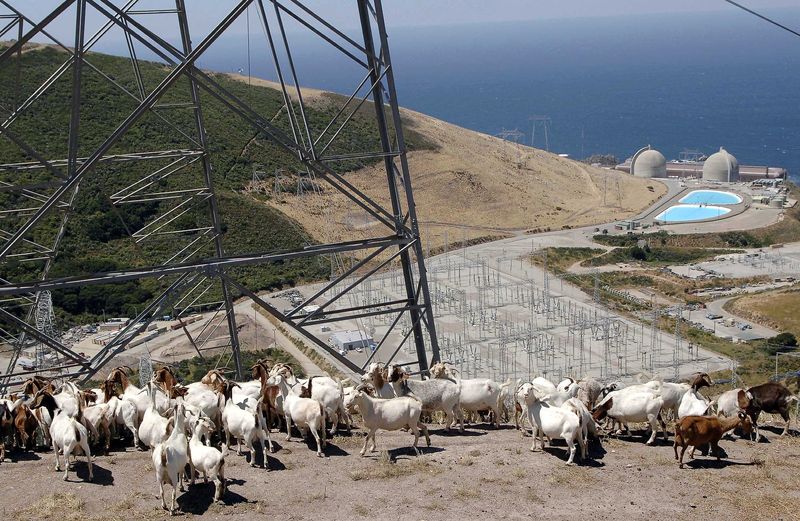By Timothy Gardner
WASHINGTON (Reuters) - Nuclear power plants using low-cost electricity to make hydrogen from water, an emerging fuel, could play a role in the energy transition, the head of a U.S. office that distributes billions of dollars in loans for new energy technologies said on Thursday.
U.S. nuclear reactors tend to operate full-time because shutting them is expensive and hard on the plants. Some have stored the excess cheap power by using it to pump water supplies to high elevations and generating hydropower when it is released downhill.
This process, called pumped hydro, could be replaced by using the cheap nuclear power to run electrolyzers, machines that separate hydrogen from water. The hydrogen could then be used to fuel things like cement plants or, eventually, hydrogen-burning vehicles to cut carbon emissions and curb climate change.
"The whole concept of nuclear and hydrogen is one that makes a lot of intellectual sense," Jigar Shah, the director of the Loan Programs Office (LPO) of the U.S. Department of Energy, told Reuters.
The two potentially have a "very interesting marriage," Shah said in an interview ahead of the Reuters Events Hydrogen North America conference in Houston from Oct. 11-12.
Since December 2001, the LPO has approved about $1.5 billion for two hydrogen projects. Shah said there are about $30 billion worth of U.S. hydrogen projects in the advanced stage that could reach a final investment decision later next year. In addition, there are about $5 billion to $8 billion in hydrogen projects in the pipeline at LPO, he added.
Critics of nuclear power say that it is too expensive to make a big difference on climate and that even so-called advanced nuclear power projects could create toxic waste that has to be dealt with.

Shah did not specify what kind of projects joining nuclear and hydrogen LPO might consider. But he said most nuclear power plant owners "are very excited about adding hydrogen to their repertoire" and that nuclear power pilot projects being developed in the marketplace could be conjoined with hydrogen.
"We hope that the data that comes from those pilot projects gives them the confidence to hit the final investment decisions on a much larger rollout," for hydrogen and nuclear, Shah said.